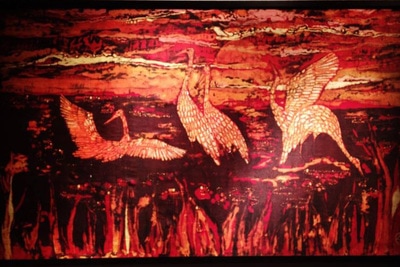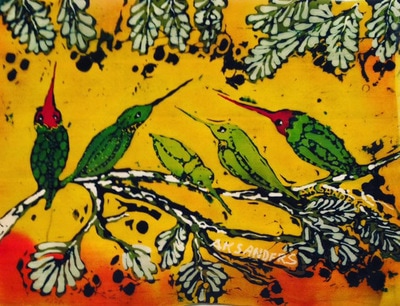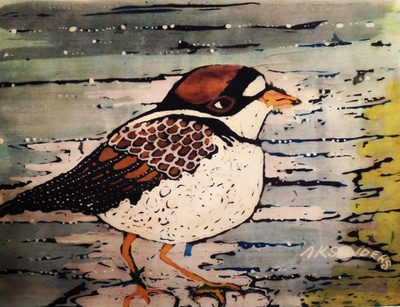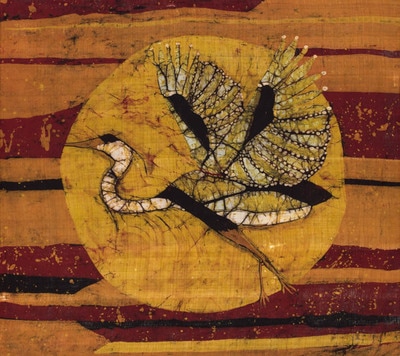The BATIKS
BATIK is an ancient art form that uses HOT WAX to create the design. Wax RESISTS the dyes/inks that are applied. I always use the example of decorating an Easter egg as I think it gives a visual. We start with a white egg and using a colorless paraffin wax crayon, we write our name. We dip the egg in a cup of yellow dye. We now have a yellow egg with a white name (the color of the egg). Now let's say we want yellow polka dots. Using our wax crayon, we draw circles onto the yellow egg. We dip it into blue dye. Blue over yellow is green so we now have a green egg with yellow polka dots and a white name. We want green stripes now so we wax stripes all over the green egg and dip it in black. We now have a black egg with green stripes, yellow polka dots and a white name. We dip the entire egg into hot water and the wax is removed and we have a lovely egg!
So it goes with BATIK. The difference is that we are using FABRIC. I use fine cotton or silk. Some people use paper. So I start with a white fabric and apply hot beeswax to all the areas I want to be white; I often do white birds, for example. What can be confusing, is that the wax appears darker than the white that it is....it is considered a reverse process, much like screen printing or linocuts or wood block printing; even tie dye is a reverse process. The design is created through many applications of wax and dyes, until the entire fabric is filled with wax except the very final dying, usually black or a very dark color. This creates the final contrast. The fine detail seen is NEVER drawn in but created by not waxing those fine lines, fingernails, eyes, etc. It is highly technical work to create such detail. So I am both a DESIGNER and a TECHNICIAN.
So it goes with BATIK. The difference is that we are using FABRIC. I use fine cotton or silk. Some people use paper. So I start with a white fabric and apply hot beeswax to all the areas I want to be white; I often do white birds, for example. What can be confusing, is that the wax appears darker than the white that it is....it is considered a reverse process, much like screen printing or linocuts or wood block printing; even tie dye is a reverse process. The design is created through many applications of wax and dyes, until the entire fabric is filled with wax except the very final dying, usually black or a very dark color. This creates the final contrast. The fine detail seen is NEVER drawn in but created by not waxing those fine lines, fingernails, eyes, etc. It is highly technical work to create such detail. So I am both a DESIGNER and a TECHNICIAN.








